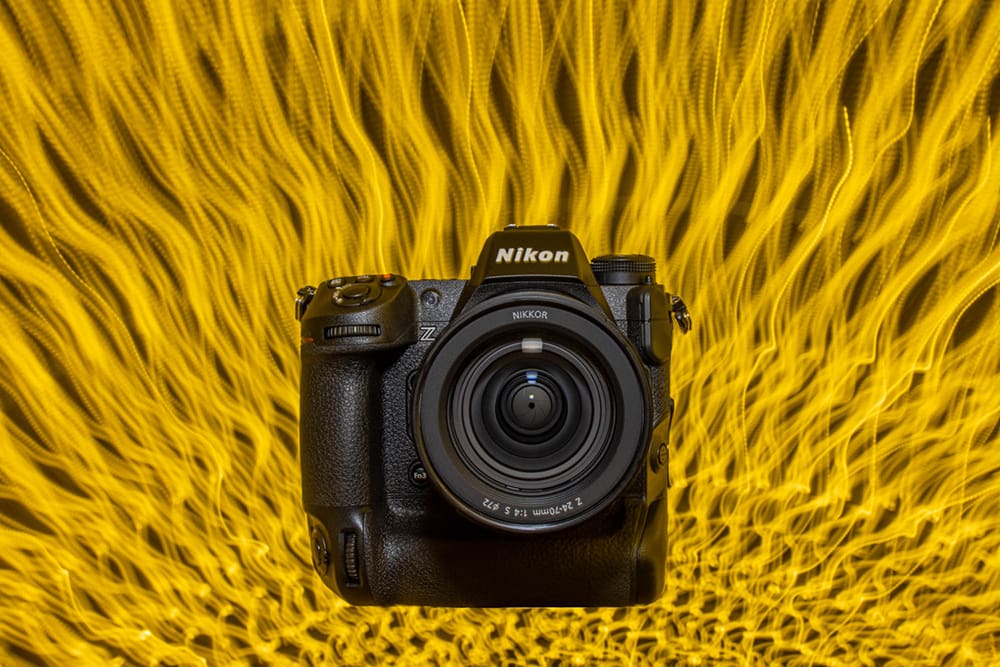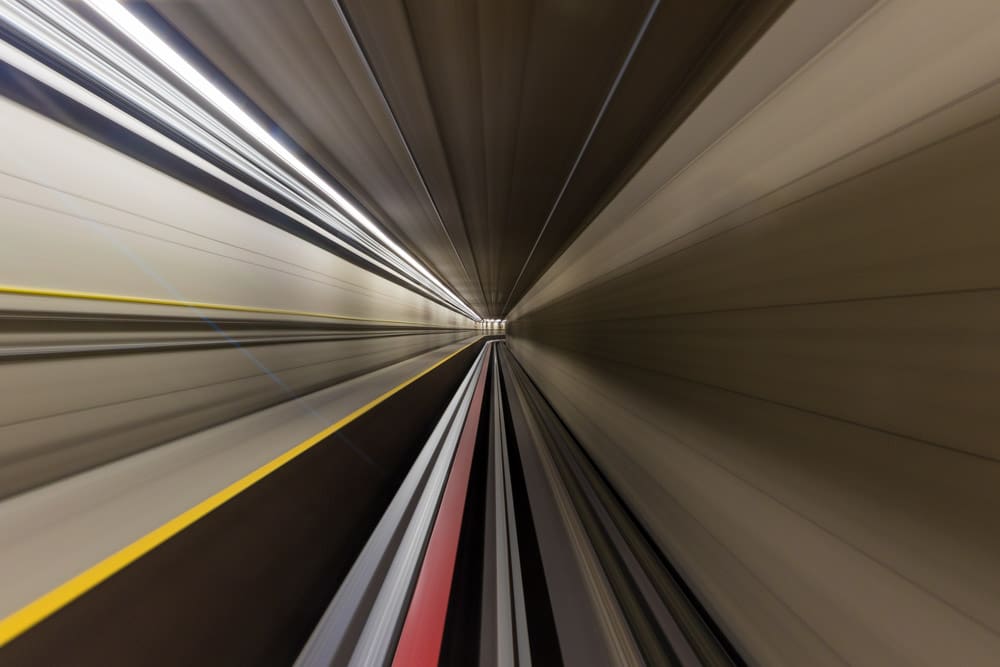If you enjoy landscape photography you know that capturing a great image isn’t as easy as heading to your nearest park and pulling out a wide-angle lens. Looking at other peoples landscape images may give you the impression that the process is pretty easy. I know that I’ve looked at many great landscape photographs and said to myself — “If I was there, I’d want to take that photo as well.”
My honest opinion about landscape photography, after a couple of decades of experience, is that it’s very challenging, often disappointing but a fantastic pursuit. Taking the time and effort to put yourself in the right position at the right time is where the challenge comes in. The weather and light is where you may find disappointment, but if you’ve done your work and you get a little bit lucky, the payoff may be a visual moment in time that may be awe inspiring and one that will never be again.
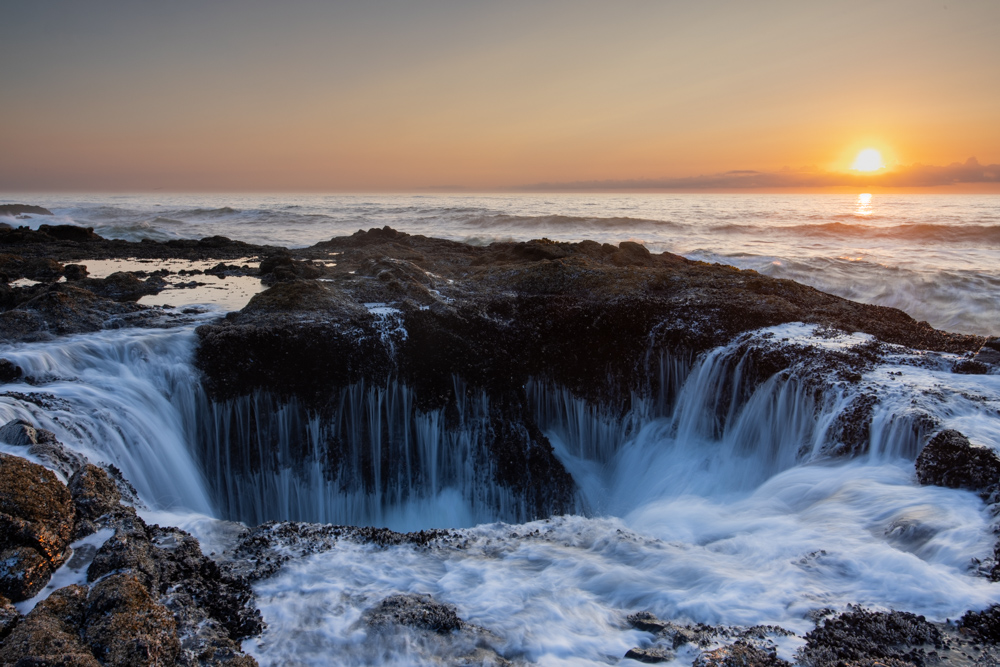
In preparation for the release of my latest class: Nature & Landscape Essentials, I headed back into the field to follow the trail and chase the light. I’m fortunate to live in a location that offers many different landscapes in a short distance: mountains, forests, lakes, ocean and even sand dunes are all less that a day’s drive away.
Returning to favorite locations with new eyes
Mt Rainier National Park is a favorite of mine for the vast variety of options that it offers. Yes, it offers the classic grand landscape of a majestic snow-capped mountain in the background with a lake and flowers in the foreground. But it’s large enough (956 square kilometers) that you can easily get lost in the hills, lakes and forests without a hint of the mountain should you get tired of it.
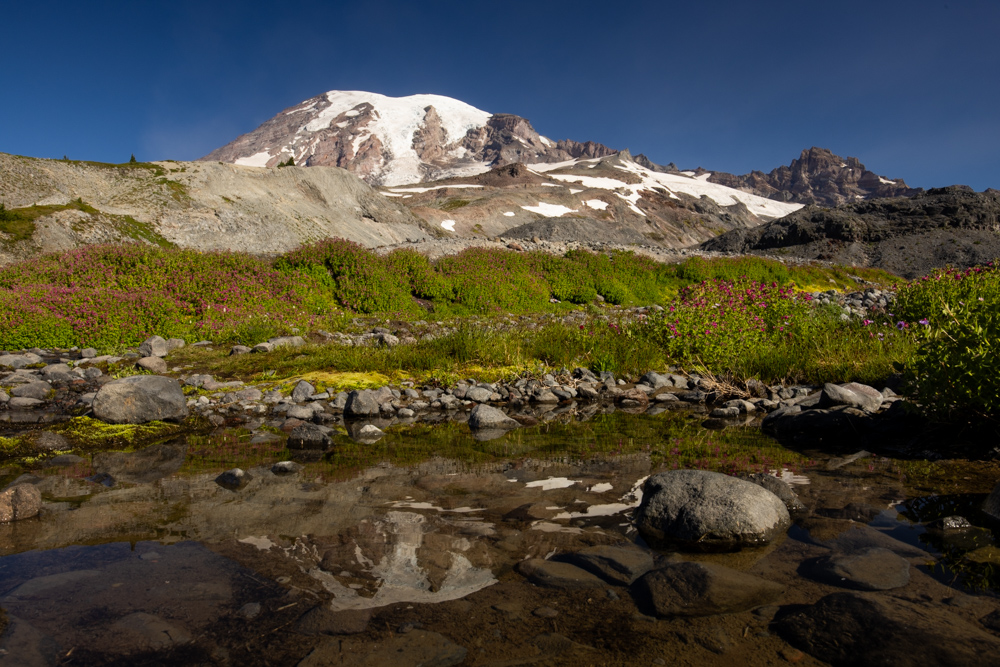
I have a long history with Mt Rainier. I first climbed up to Camp Muir (10,000 feet) when I was in high school, I’ve been on too many day-hikes to count, I’ve hiked the 93 mile Wonderland Trail circumnavigating the mountain, and I’ve climbed to the summit three times. As you might expect, I have a number of favorite locations I like to go with my camera each time I return.
Coming back to the mountain this year I again returned to an area that proved to be fruitful in the past only to be disappointed in many cases. This is just one of the challenges of landscape photography, there is an unpredictable element of how the conditions will affect a photograph. This year, the wildflower bloom was minimal. There were a few flowers here and there, but in the past it was like the poppy field in the Wizard of Oz. No matter what lens you have, ultra-wide, tilt-shift or other, you can’t just use optics to fully make up for a lack of content.
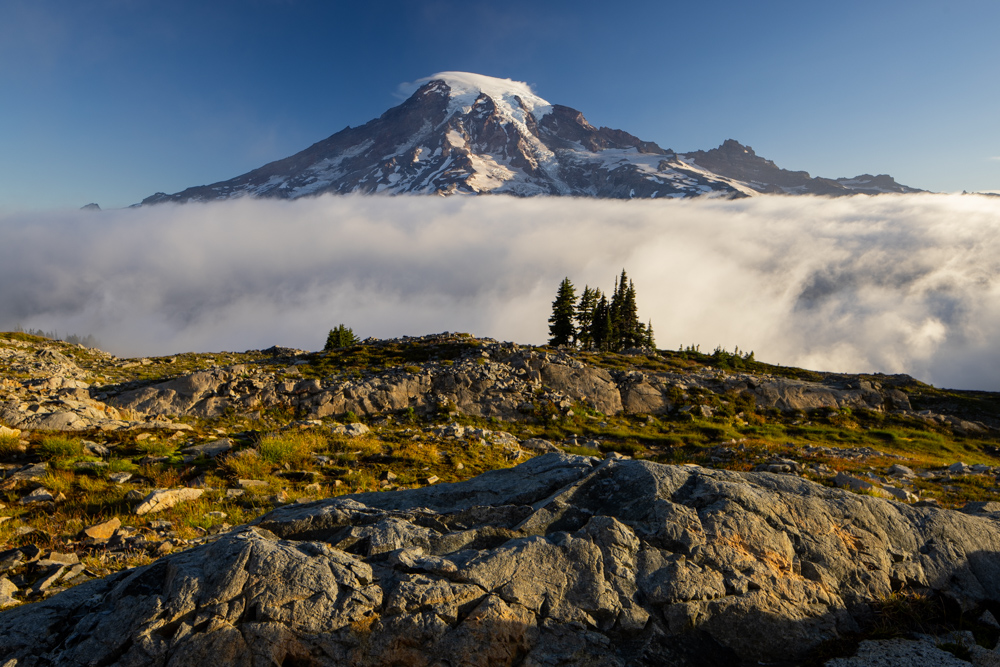
The lack of abundance in one area inspired me to explore new trails and regions. These new areas opened my eyes to opportunities for images. Why hadn’t I taken these trails before? Well to start with, there are a lot of trails in the park and I haven’t had the chance to hike all of them, yet. I’ve possibly avoided them as I hadn’t specifically heard anything special about them; they simply weren’t on my radar.
Two types of landscape pursuits
I can identify two different types of agenda when pursuing landscape images – known and unknown objectives. A “known” objective might be going to Reflection Lakes at Sunrise in hopes of good light and weather. In this case you know where you are going, what your subject is, what lens will be most useful and what to look for in weather and light.
“Known objectives” are usually where the best photographs are taken. The research is done, the conditions are watched and the timing is handled to maximize every element. This is a photographic project handled in the manor of a military operation, with maximum likelihood of success. Locations should be researched and obstacles should be known.
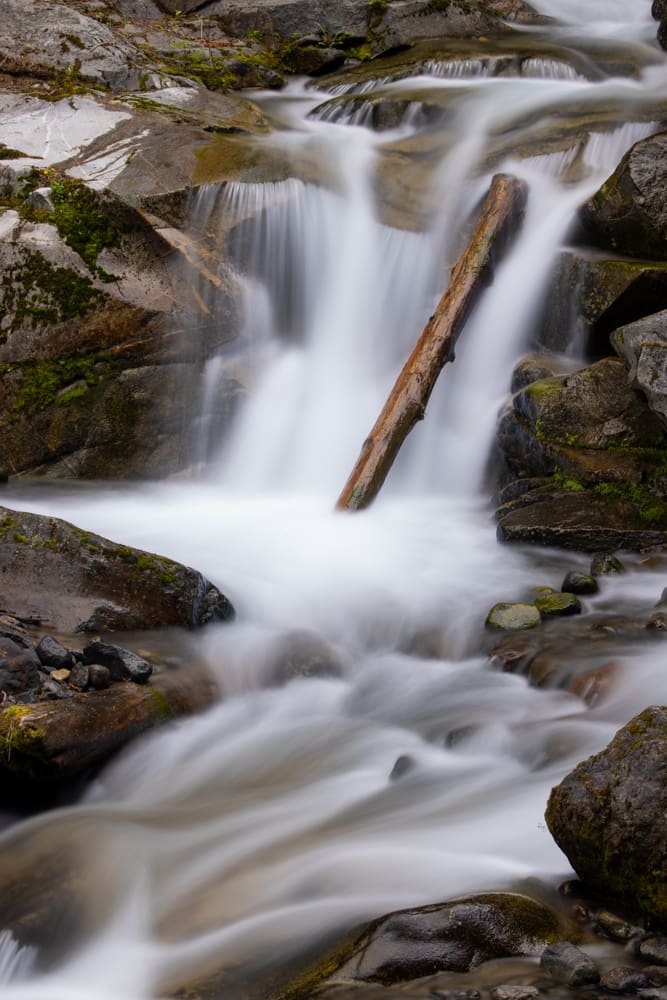
The “unknown objective” is often much more fun. Exploring a new-to-you trail, park, or natural area, likely won’t lead to great photos, statistically speaking. But sometimes it does lead to great photos, and that is one of the great pleasures of nature and landscape photography. You never know what you will get. Who doesn’t like a good surprise?
So back at Mt. Rainier with my dismal field of no flowers, I headed for new (to me) trails. What did I find? I found rivers, lakes, waterfalls, fog and flowers — it was wonderful. At first I was disappointed after my sunrise was stymied by fog. Note to self: it’s very difficult to get beautiful sunrise light with thick fog.
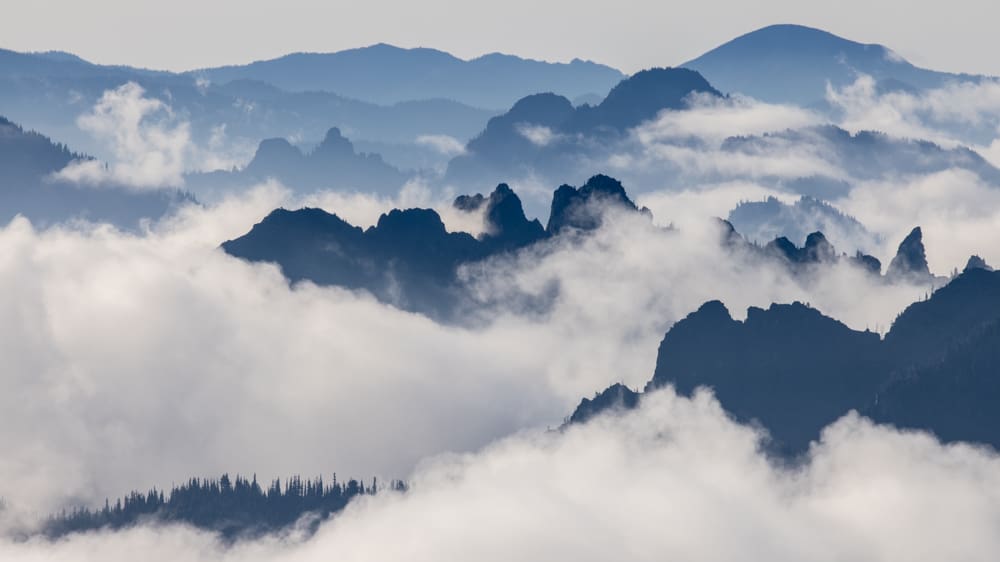
“Never mind the fog”, I said to myself, “let’s hike this trail and see what we can find”. At one point I found myself on what I assumed to be a high viewpoint, only to be stuck in thick fog. While disappointed that I couldn’t enjoy the view, I changed my thinking and started to focus on what I could capture in the fog that I couldn’t do in normal conditions.
I started to see possibilities and new shots. I was using the fog to create depth and clean up messy backgrounds. It added a layer of mystery to a number of images. Just like in life, don’t dwell on what you can’t do, focus on the opportunities that you do have.
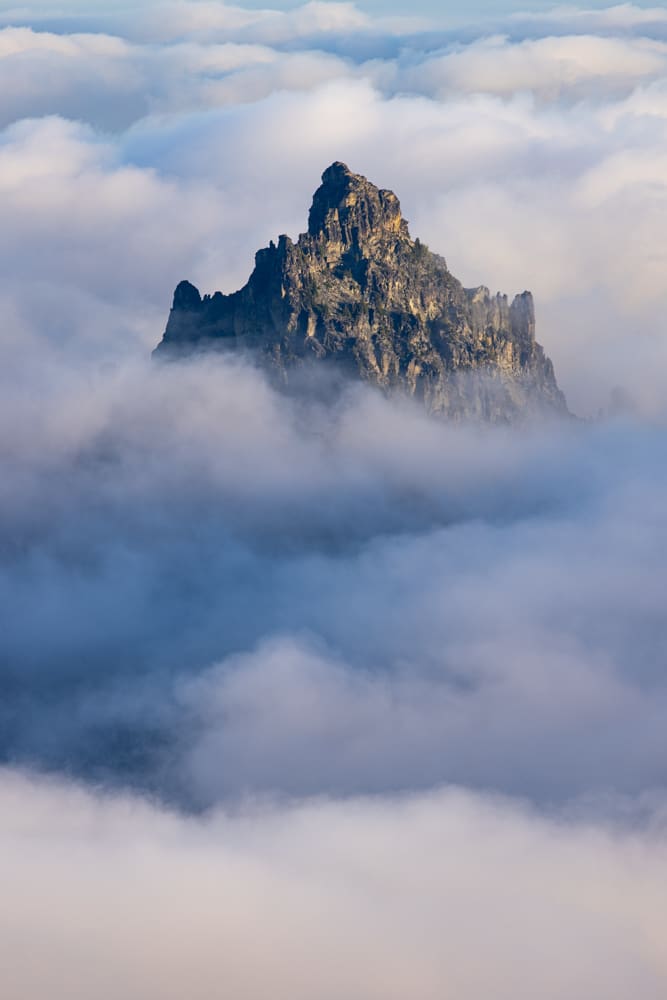
This is an important element in why I love nature and landscape photography. While you may never know exactly what you are going to get, your chance of success is greatly enhanced with a positive attitude and with optimistic eyes.
It’s my hope that my Nature & Landscape Essentials class will provide you with the tools and techniques so that you can make the most of your nature explorations.
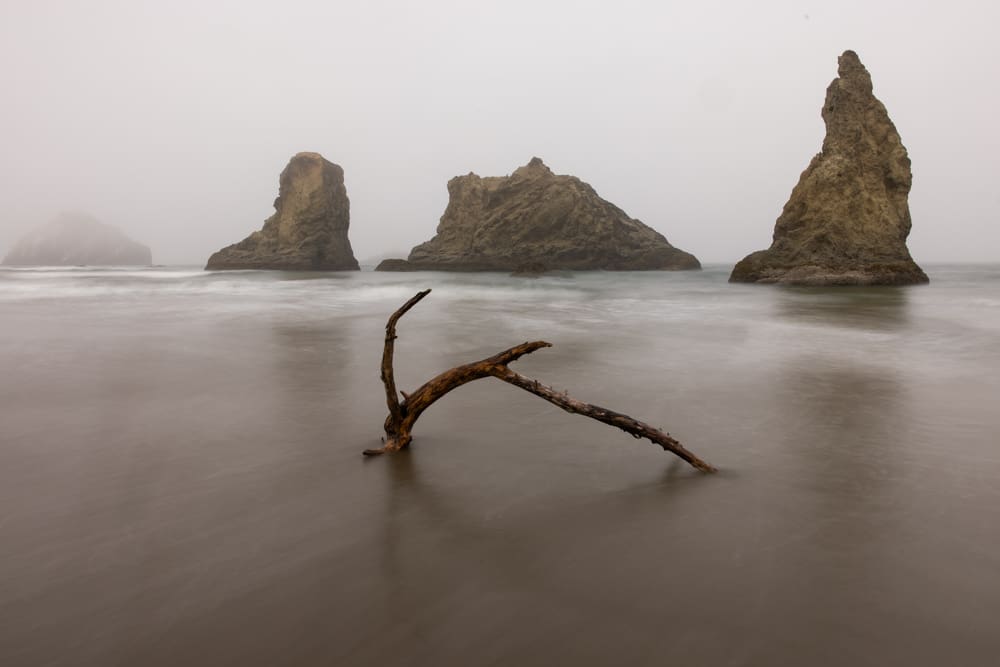
Become part of John’s inner circle
Sign up for the newsletter here — it’s free.
Want to become a better photographer?
Check out John’s selection of photography and camera classes here.

